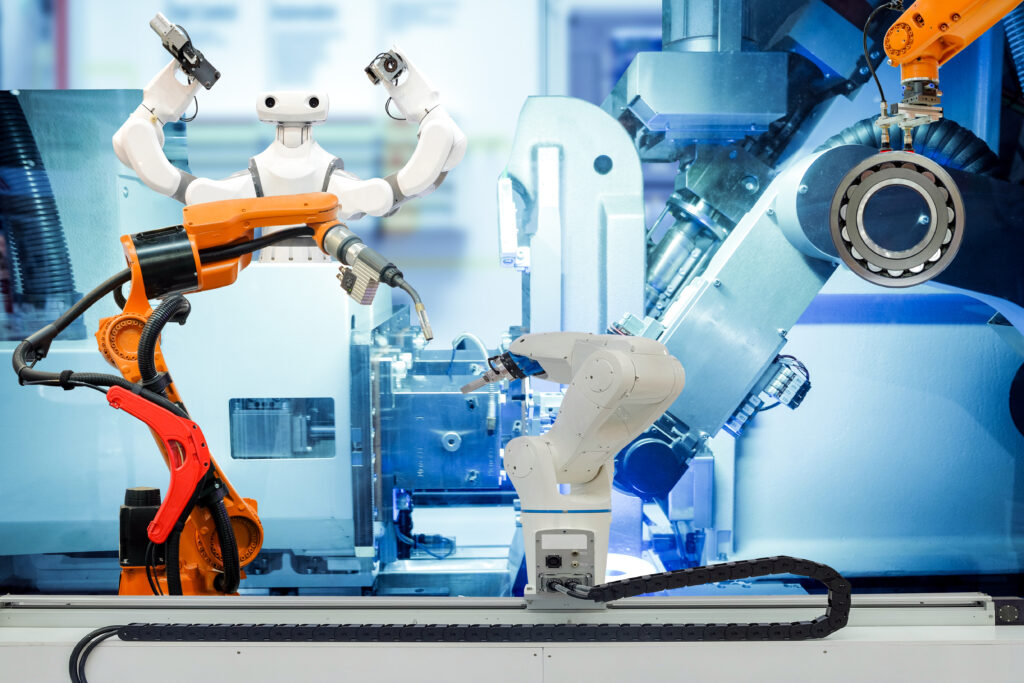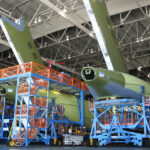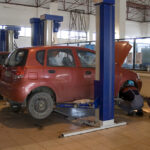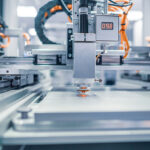It is essential to have a business that can be as lean and productive as possible in today’s climate, so automating the processes is an ideal solution. When it comes to automation, integrating robots into businesses is a no-brainer because of the functionality and articulation they demonstrate in different use cases.
The robots require a strong and sturdy structure which is why manufacturers rely on sheet metal fabrication. It is the most cost-effective option that provides freedom of customizability and precision to manufacturers. On top of that, it is durable too.
Right off the bat, sheet metal provides the best use cases in industrial robotics, but there are both upsides and downsides to it. Keep scrolling as this article will give a lowdown of it all.
Advantages of Sheet Metal Fabrication for Industrial Robotics
#1 High Precision
Sheet metal is popular amongst many industries for its malleable characteristics. Not only is sheet metal robust, the manufacturers even find it easy to mold and fabricate it into different shapes as per the business products’ requirements.
The robotics industry requires components that are uniquely shaped and designed with the highest levels of precision. This is why sheet metal is a great option for the manufacturing of robotic components.
Manufacturers can bend these metals into several shapes without downplaying their quality or structural strength. Moreover, these can also give you the freedom to compress or stretch them in any design without them breaking or cracking.
Sheet metal fabrication gives manufacturers creative freedom in producing customized parts. Different robots have different shapes which is why the sheet metal’s customizability comes in handy.
#2 Durability
Sheet metals are resistant to corrosion and chemicals. Because of this, they don’t rust or oxidize after coming in contact with moisture, sun, or water. All types of sheet metals resist extreme pressures — A much-needed feature for industrial robotics.
These include aluminum, cold-rolled steel, copper or brass, and galvanized or stainless steel. However, they vary in different characteristics, such as strength-to-weight ratio, machinability, toughness, or flexibility.
Aluminum has an excellent strength-to-weight ratio, whereas stainless or galvanized steel is more corrosion-resistant and robust. This makes these metals durable and long-lasting for robotics equipment.
Sheet metals are used in the production of robots because they can do the heavy lifting and resist the intense pressures of the manufacturing processes.
#3 Lightweight
Sheet metals are known to be both lightweight and strong. Sheet metal makes the vehicle move easily because of its lightweight unlike other materials used in the machines which make them heavy.
The robots are easy to move around because they are made of lightweight sheet metals. This, as a result, improves their speed and fastens their repetitive motions to function effectively.
#4 Cost-Effective
The low costs of sheet metals give manufacturers a huge benefit as they get to save money by going for sheet metals other than expensive materials. Not only do they come at an economical price, but they also offer great quality. This is why businesses heavily bank on them for robot production.
Compared to other objects, the processing cost for sheet metals is also quite low. Unlike other fabrication materials that require expensive molds to create shapes, sheet metal can be easily bent into required shapes only by using press brakes.
Affordability is a key reason why a lot of manufacturers opt for sheet metal. On top of that, manufacturers also benefit from sheet metals because they are produced in bulk at a low cost.
#5 Easy to Repair or Replace
One of the key advantages of using sheet metals in industrial robotics is that the parts or components are easy to repair. This allows metal workers can easily modify the parts if they are damaged or not up to the industrialist’s preference.
Moreover, with sheet metal fabrication, replacing individual parts is a simple process and can be achieved without having to replace the entire machine. For example, if an assembly is made of different metal parts, then the individual part can be easily removed to be replaced rather than removing the entire assembly.
#6 Sustainability
Metals are known to be the most sustainable materials because they are a natural resource which makes them both economically and environmentally efficient. This is what makes it a great material that can be recycled and turned into another compound.
In industrial robotics, the machines have a finite life and need to be discarded after they are out of practice and reach their endpoint. Sheet metal can be safely disposed of or recycled, which is what makes them a preferred choice.
Disadvantages of Sheet Metal Fabrication for Industrial Robotics
#1 Time-Consuming
The various processes involved in cutting, shaping, bending, and welding can be quite time-consuming, especially when it comes to creating custom-designed components.
As you may know, achieving a unique and precise design for metal components involves several procedures, which are fundamental to the creation of robots with distinct functionality. Hence, addressing any faults or imperfections in the final product can further prolong the production process (which wasn’t anticipated initially).
It is true that robotics manufacturing in itself is a time-intensive endeavor. However, sheet metal fabrication remains a crucial element of the manufacturing process for many industrial robots. It may add to the overall production time, but it is an indispensable step that ensures the precision and durability of the final robotics products.
#2 Requires Specialized Tools
Sheet metal fabrication requires specialized equipment which can be heavy on the pocket and this acts as a significant drawback. The cutting, bending, and welding of metal usually require specialized machinery, which adds to the overall costs.
#3 Safety Issues
The hazardous material involved in sheet metal fabrication makes it a dangerous and risky process. The cutting, shaping, and welding of metal can pose great health risks for the workers if not handled with utmost precaution.
The welding fumes pose a great threat to labor if they don’t wear proper gear. Due to the manual labor involved in the process, it can cause repetitive motion injuries or musculoskeletal disorders.
Applications of Sheet Metal Fabrication in Industrial Robotics
The world of industrial robotics is incomplete without sheet metal fabrication. Read below to find out the many applications of sheet metal fabrication in industrial robotics.
The Chassis or Frame
In industrial robots, sheet metal is used to create the underlying chassis or frame beneath the body that forms the arm of the robot. Steel is the most commonly used material to make the chassis of the robot since it holds great strength.
The chassis holds the structural weight of the whole robot because it’s the foundation from which the rest of the robot is created. The engineers who manufacture industrial robots ensure that the robot is made from strong materials and a firm structural frame.
This is crucial to an industrial robot’s purpose because they are subjected to various hazardous tasks such as repeated motions, lifting heavy weights, etc. Therefore, choosing a strong material like steel is important.
Other types of sheet metals used for chassis are stainless steel, high-strength steel, and galvanized steel. These types of steel are used in the production of various vehicles because they are known to tolerate heavy pressures or weight without damage.
Arms
The robotic arm resembles the human arm and its actions, however, it can carry heavier loads and move faster than a human arm. The robot arms are made from sheet metals like steel, aluminum and in some cases titanium.
Aluminum is known to be a lightweight material that makes the arm work at a fast speed with repetitive motions. Whereas steel is stronger and helps the arm to carry and lift heavy loads with ease.
End Effector
The end effector or the end of arm tool (EOAT) connects to the robot’s arms and functions as the hand. This tool can be a mechanical gripper with two or more fingers, a vacuum pump, magnets, or any other tool installed on choice.
This is the most important part of the robot since this is linked to the material handling in industrial warehouses. This part comes in direct contact with the material.
The end effectors are also made from aluminum and steel sheet metals because of their great strength-to-weight ratio, and durability. Moreover, the gripper requires high precision which makes sheet metal ideal for its unique design.
Base Plates
The base plates are also one of the most important parts of the robotic arm because the weight of the whole arm including the payload is affected by this part. The base plates make a stable platform to which the industrial robot is mounted or attached.
These plates are formed from aluminum, stainless steel, and galvanized steel. These sheet metals can hold heavy weights without crumbling or bending which makes them ideal for a stable base for the robotic arm.
Moreover, these sheet metal fabrications can increase the lifespan and functionality of the whole robot.
Conclusion
Sheet metal fabrication has proven to be durable as well as strong which makes it a popular choice for industrial robotics.
Sheet metals like aluminum, stainless steel, and galvanized steel are commonly used in producing these robots because of their amazing properties. From high accuracy to cost efficiency, these deliver the best results for the manufacturers as well as the clients.
Our team at Monsterbuilder.ai specializes in sheet metal fabrication, CNC machining, and 3D printing to meet your business needs. Reach out to us today to discover how we can assist you!






